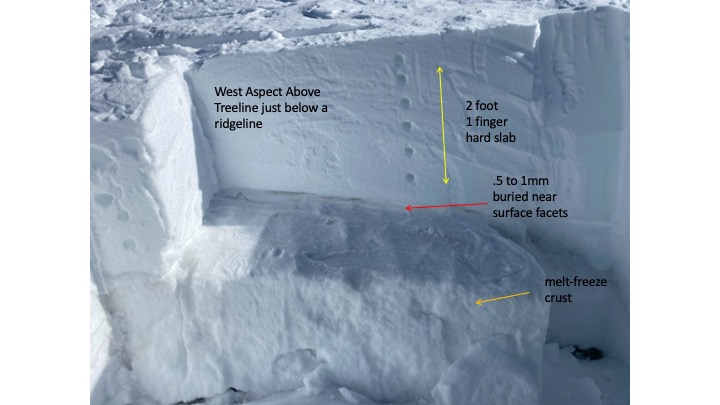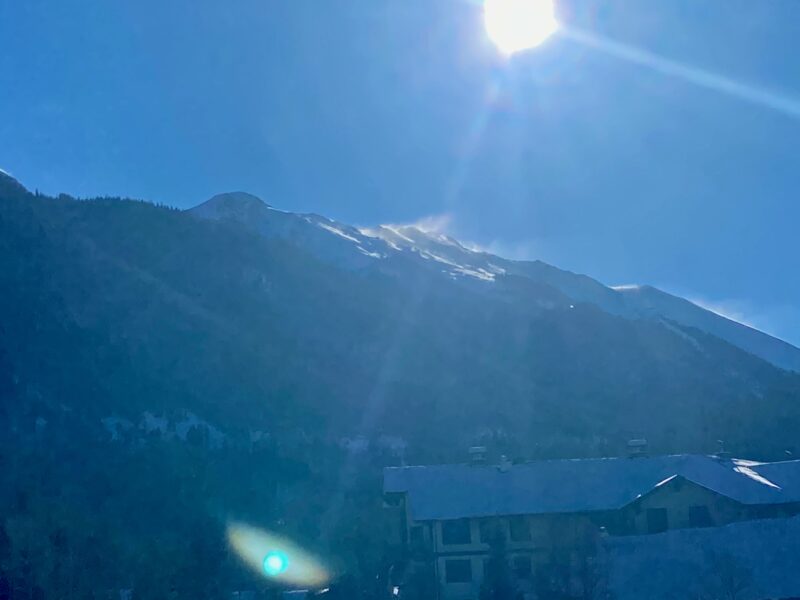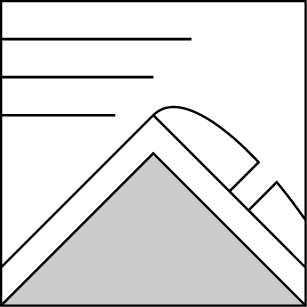Basic Information
Observation Details
Observation Date:
December 4, 2020Submitted:
December 5, 2020Observer:
TAC - Andy BondZone or Region:
Taos AreaLocation:
Long CanyonSigns of Unstable Snow
Recent Avalanches?
None ObservedCracking?
None ExperiencedCollapsing?
None ExperiencedBottom Line
It's a safe assumption to assume that if you are skiing on a West aspect above treeline right now, you will be skiing on some form of a slab. These slabs are stubborn and we couldn't get any to release. The question is what weak layer is beneath and what are the consequences below. These slabs are pocketed but may step down into weak faceted snow further down the track.
Media



Advanced Information
Weather Summary
Cloud Cover:
ClearTemperature:
22 - 33Wind:
Light , NEA beautiful sunny day with light winds below treeline and moderate sustained winds at ridgetops out of the ENE. We did see plumes of snow drifting off of ridgelines in the higher mountains. Temperatures got above freezing below 10,000'
Snowpack Observations
Went to check out Long Canyon for the first time this year. There is not much snow below 10,000' (only a couple of inches) and travel on skis is probably not recommended for this trailhead for the first 800 vertical feet. The track up Long Canyon has close to 30 blowdowns presumably from the 11/8 100 mph wind event.
The shallow East facing slopes from the last three days of moderate ENE winds has stripped much of the East facing slopes to just shallow facets. We dug a pit on an east-facing slope near treeline and found a deteriorating crust with basal facets beneath and decomposing snow above. Not a problem now but will be once we introduce a load and a cohesive slab on top.
Skinning up on steep shady north aspects to the ridgeline was like hiking in scree with 1 step forward and 2 steps back. A pretty good indication these north and shady slopes are faceting all the way to the ground.
We checked out West aspects that ran back into the Colombine Drainage. Just below ridgetops we found stiffer slabs from the ENE winds over the last several days. Just 100' down the path we found less stiff slabs and not as thick. One of the deeper slabs we found was over 2' feet thick and 1 F hard. Our extended column test failed on isolation which sounds scary and is, but we are finding a high level of variability with the underlying stratigraphy.
It's a safe assumption to assume that if you are skiing on a west aspect above treeline right now, you will be skiing on some form of a slab. These slabs are stubborn and we couldn't get any to release. The question is what weak layer is beneath and what are the consequences below. These slabs are pocketed but may step down into weak faceted snow.
Avalanche Problems
| Problem | Location | Distribution | Sensitivity | Size | Comments |
|---|---|---|---|---|---|
 Wind Slab
Wind Slab
|
|
Terrain Use
Not sure I would drop a west-facing line right now without thinking about the consequences of popping a stubborn slab right now and what that ride would entail. Good powder skiing in the trees near treeline, just think light thoughts!
Close